- Home
- > Nature online
- > British natural history
- > Exploring British wildlife: bluebells
- > Identify your bluebells
- > Bluebells of the world
Primary navigation
Bluebells of the world
There are 11 known species of bluebell around the world. The scientific name for the group is Hyacinthoides. Only one of these species, Hyacinthoides non-scripta, is a native flower in the British Isles.
The others occur mainly in the western Mediterranean, including North Africa (Morocco to Tunisia), the Iberian Peninsula, and the Maritime Alps of France and Italy.
The relationships between different bluebells are complex. Scientists over the last 80 years have used different methods to try and classify them.
DNA studies have now helped to show how many species there are and how they might be related to each other.
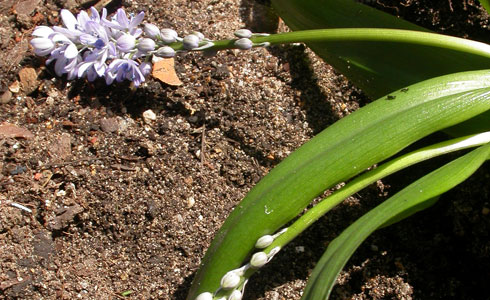
Hyacinthoides aristidis
A native of North Africa (Tunisia and Algeria), this plant flowers from late autumn until late winter. The flowers open from the top of the spike downwards. The plant has only two, occasionally three, tongue-shaped leaves which have a distinct keel below.
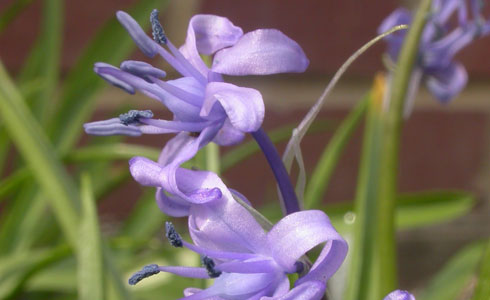
Hyacinthoides cedretorum
This plant of fir and cedar woods is scattered across the high mountain ranges of North Africa. It used to often be treated as a variety or subspecies of H. hispanica, which does not occur naturally in Africa, but the two plants have different numbers of chromosomes. H. Hyacinthoides also has very backwardly curling tepals and the stamens are attached only at their base. Plants from the High Atlas, which grow on open cliff ledges, have yellow pollen.

Hyacinthoides flahaultiana
This species is a native of southern Morocco where it grows in spiny scrub at over 1000m altitude, in a small area of the Anti-Atlas Mountains. For a long time it was mistaken for H. mauritanica as both plants have long-pointed leaf tips. However, the shape of the inflorescence, a narrow pyramidal spike, is different in H. flahaultiana, and the flower stalks do not become as erect.
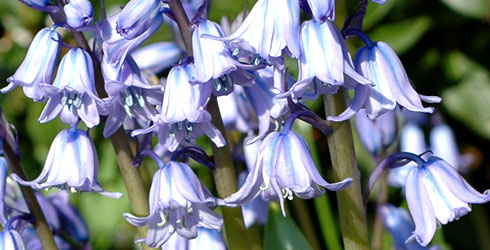
Spanish bluebell, Hyacinthoides hispanica
This is the most variable of the bluebell species. It is widely distributed throughout southern and western Iberia, extending northwards to Leon and east to Madrid provinces. Its distribution is uncertain as it has been mistaken for other species and it forms hybrids where it meets them. It is characterised by large bell-shaped flowers, blue pollen, and stamens of unequal height which are fused for more than a third of their length to the tepals.
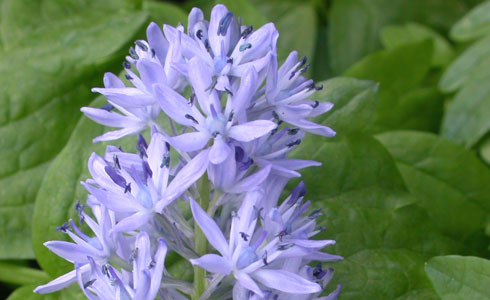
Hyacinthoides italica
This plant is native to a rather limited area of the Alpes Maritimes in southeastern France and northern Italy, where it grows in meadows and damp woodlands. It is rarely grown in Britain and so it is very rarely naturalised. It can be distinguished by its open flowers with tepals up to 7mm long, and its broad, rather than long-pointed, leaf tips.

Hyacinthoides mauritanica
This species was described from a plant found at the northernmost tip of Morocco but it also occurs in western Portugal. It is a lowland plant and grows in places that are damp in some seasons. The bulbs are spherical, the leaves have a long narrow tip and the inflorescence has very upright flower stalks elongating in fruit. Small plants with undulate leaves from the Cape St. Vincent area have been called H. vincentina but they do not differ significantly from H. mauritanica.
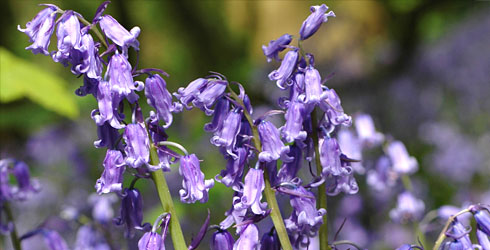
Hyacinthoides non-scripta
This is the most widely distributed species of bluebell, extending along the Atlantic coasts of Europe, from northern Spain eastwards to Belgium and the Netherlands. Nowhere is it as spectacular or abundant as in the British Isles, where it reaches its northernmost limits. It is defined by several features: creamy-yellow pollen, narrowly tubular bell-shaped flowers, a strong scent, and very unequal stamens attached for much of their length to the tepals.

Hyacinthoides paivae
This is a recently recognised species which was described in 1996. It has been mistaken for both H. hispanica and H. italica and shows features of each. It is found in north west Spain and northern Portugal, perhaps as far south as Lisbon. It usually grows near the coast and in lowland areas but it can also be found at high altitudes in the Serra do Geres in Portugal. It has shorter tepals than H. hispanica, the stamens are roughly equal and they are only fused to the tepals for less than a third of their length.
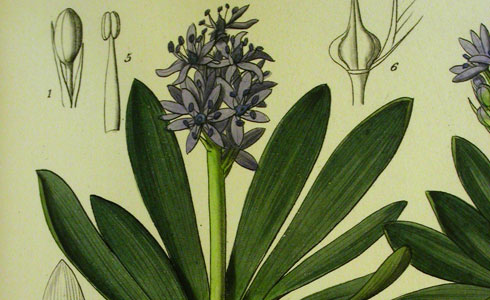
Hyacinthoides ciliolata and Hyacinthoides lingulata
These two small North African species, which flower in the autumn and winter, form part of a variable group that still needs further research. They are different from H. aristidis as they produce many shorter, flatter leaves per bulb. H. ciliolata seems to have a more easterly distribution than H. lingulata. Also, its flower spikes open from the base upwards whereas the flower spikes of H. lingulata open from the top down.
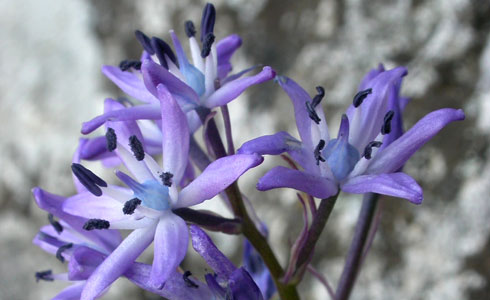
Hyacinthoides reverchonii
This species is native to the mountain woodlands of the Sierra Cazorla and adjacent Sierra Segura in southeast Spain, where it is abundant. It has bigger flowers than H. italica with a distinctive purplish-violet tinge. The bulbs are rather butternut squash-shaped and the leaf bases are wine-red.
Related information
External links
Toolbox
- Contact and enquiries
- Accessibility
- Site map
- Website terms of use
- © The Trustees of the Natural History Museum, London
- Information about cookies
- Mobile